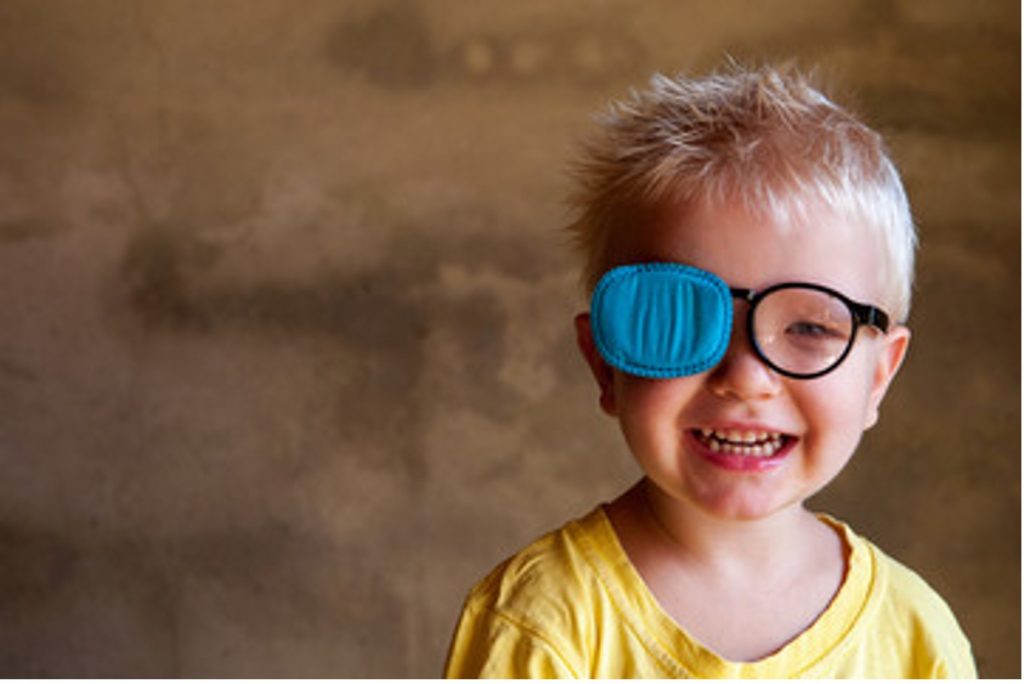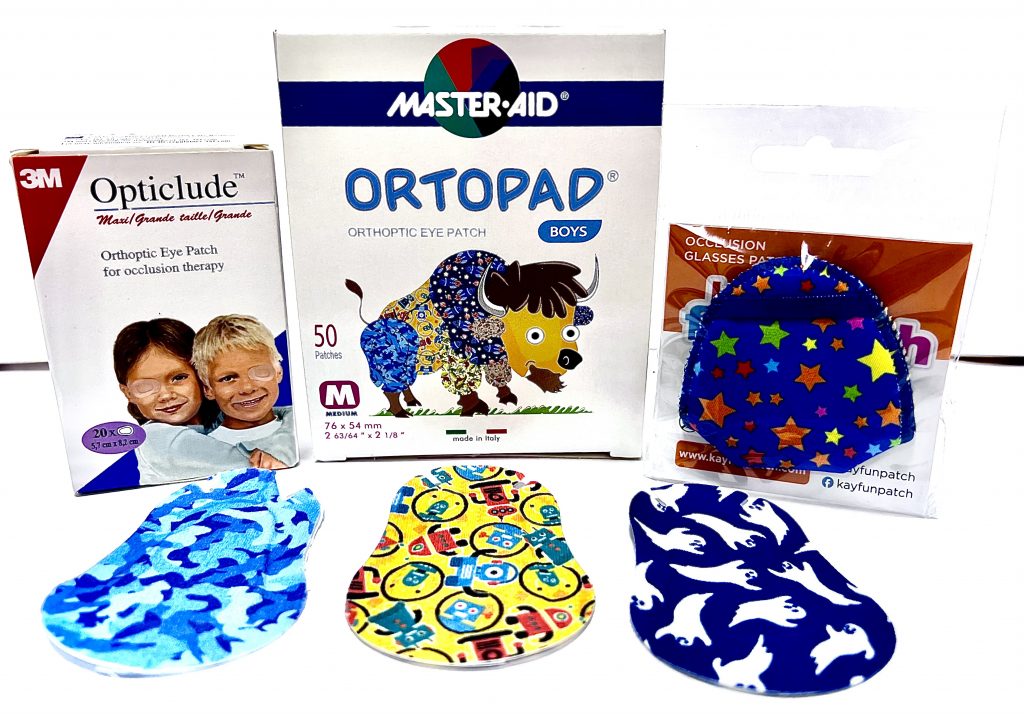What is Amblyopia?
Amblyopia or Lazy eye is a condition where one eye sees less well than the other. This develops when the vision in one eye doesn’t develop properly in childhood which results in the child seeing less clearly out of one eye and relying more on the other ‘good’ eye.

What leads to Amblyopia?
There are many causes for Amblyopia. Commonly associated conditions include:
- squint / strabismus (an inwards or outwards turn in one eye)
- Childhood cataracts
- Refractive errors especially where the lens prescription in one eye is stronger than the other
- Droopy eyelids
How is Amblyopia treated?
Treatment for amblyopia will generally involve prescribing glasses when needed and/ or patching of the good eye. If wearing glasses alone doesn’t improve the vision in the lazy eye, then additional patch therapy may be needed. Sometimes dilating eye drops may be used instead of patching.
What is Patch therapy/ Patching?
Patching is a gold standard, time-tested treatment for lazy eye. This involves covering the eye that sees well to encourage your child to use the lazy eye. This is achieved using a ‘sticky patch’ worn on the face or with a fabric patch. If your child wears glasses, they will need to be worn over the patch.

How long is the patch worn for in a day?
The duration for which a patch will need to be worn would depend on the age of the child and the level of vision in the ‘lazy eye.’ Poorer the vision in the ‘lazy eye,’ the longer the patch needs to be worn.
How long will the patch therapy last?
The aim of patching is to improve the vision in the lazy eye to be equal to the good eye or the best that it can be. Patching will need to be continued till this is achieved and then the amount of time the patch is worn each day can be gradually reduced and stopped.
Is there an alternative to patch therapy?
Yes. In selected children, dilating eye drops (Atropine) may be used instead of patching. Atropine takes away the ability to focus for near in the eye in which it is instilled into. Hence, in children with lazy eye, Atropine in used to blur the vision in the good eye thereby encouraging the child to use the lazy eye.
Are there any side effects of using Atropine eye drops?
Atropine is largely safe, however, as with any medicines, some side effects may occur. This would include larger pupil in the eye in which the drops are used which may make the child more sensitive to light than usual. Other reported side effects are rare, and these include:
- Itchy or swollen eyelids
- Red or watery eyes
- Dryness of skin/mouth
- Fever
- Flushing of face
- Restlessness
- Hyperactivity
- Irritability
- Vomiting
If any of the above occurs, stop using the drops immediately and seek advice from your child’s GP/Pharmacy/NHS 111 service.
